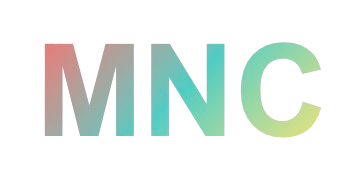Description
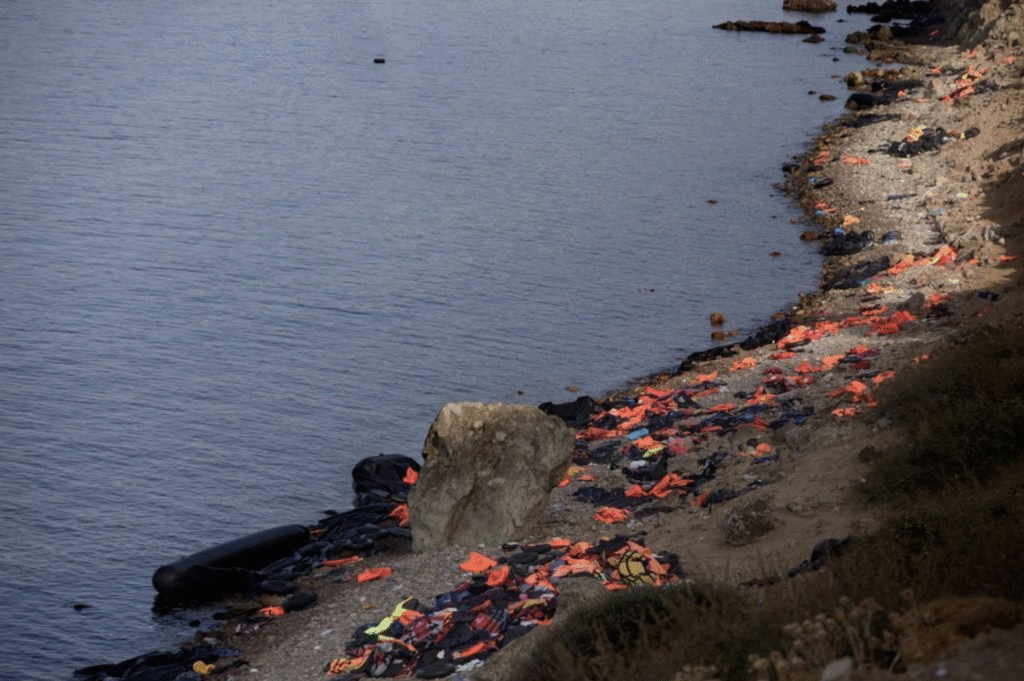
The years 2011 to 2015 in Europe are what some people consider the height of the “European migration crisis.” There was an unusually high influx of forced migration in the European Union, especially in Lesvos. For forced migrants, Lesvos served as a gateway to other European countries because of its strategic geographic position in the Mediterranean. Forced Migrants would wear life jackets when crossing the Mediterranean Sea from the Middle East, especially from Syria, to Europe. The life jackets were quickly cast off when they reached land. During this time, the lifejackets accumulated on the beaches of Lesvos, causing there to be five times more lifejackets than permanent residents on the island. In 2015, the news network, Al Jazeera, reported more than 450,000 life jackets on the shores of Lesvos. Yet this enormous amount did not represent the number of actual immigrants who attempted the journey, as many died due to being given fake life jackets. As a result of being overwhelmed by the amount of life jackets and other migration-related debris in Lesvos, life jackets started being shoveled into mounds.
In 2015, the activist group Lesvos Solidarity and a small group of forced migrants partnered together to create a solution, Safe Passage Bags. They would upcycle discarded life jackets into bags and wallets. The funds acquired by selling the products went towards community needs such as medical and legal aid, education programs, and basic skill training to integrate into society. This small product was also meant to be a monument for those who had passed on the journey. The group told their customers that the bags were made from lifejackets discarded by forced migrants, allowing for forced migrants to be seen and stories to be told. The Safe Passage bags inspired other forced migrants and volunteers to make other kinds of items, such as laptop cases, pencil cases, wallets, and even mattresses.
In 2015, the activist group Lesvos Solidarity and a small group of forced migrants partnered together to create a solution, Safe Passage Bags. They would upcycle discarded life jackets into bags and wallets. The funds acquired by selling the products went towards community needs such as medical and legal aid, education programs, and basic skill training to integrate into society. This small product was also meant to be a monument for those who had passed on the journey. The group told their customers that the bags were made from lifejackets discarded by forced migrants, allowing for forced migrants to be seen and stories to be told. The Safe Passage bags inspired other forced migrants and volunteers to make other kinds of items, such as laptop cases, pencil cases, wallets, and even mattresses.
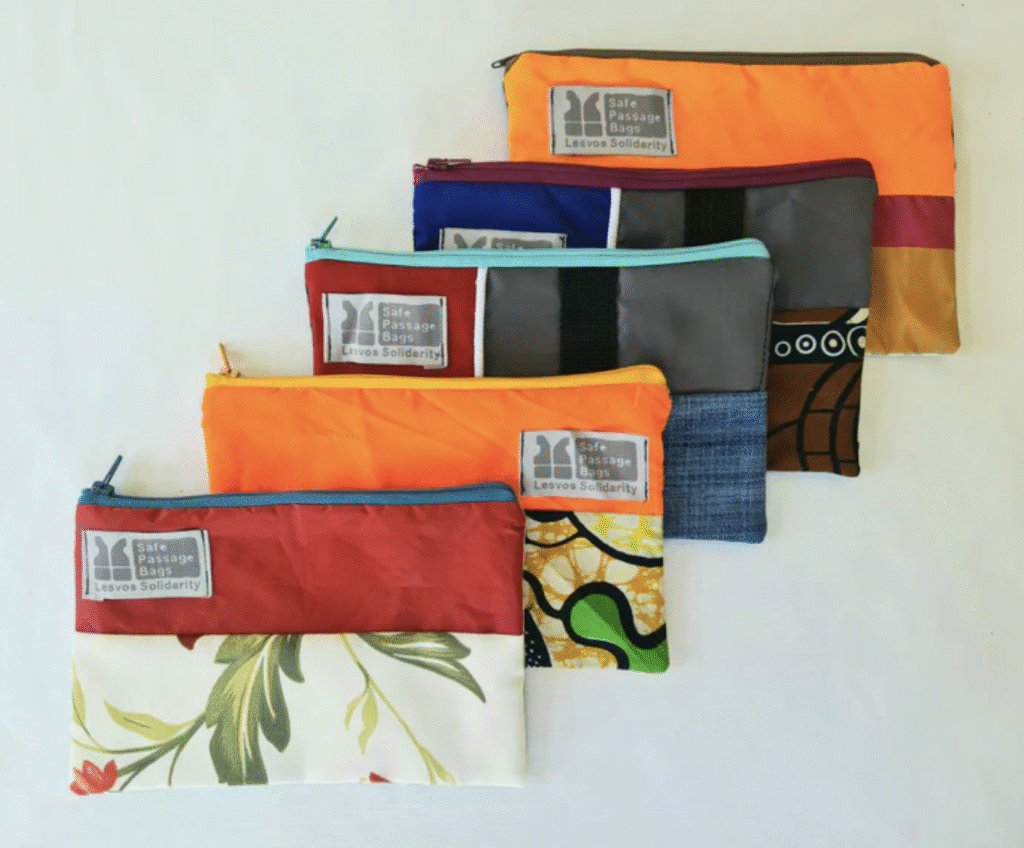
The life jacket mattresses were first created by two Danish volunteers, Mads Damgarrd Peterson and Anezka Sokol, working in Lesvos. They both worked in the government-established reception centers that were over capacity for forced migrants. This overcrowding caused many migrants to need to sleep in tents outside, even in the cold winter weather. This weather caused the ground to be damp, increasing forced migrants’ risk of hypothermia.
The two Danish volunteers originally sat on life jackets to avoid the cold ground. This led to them thinking of the idea of making a mattress out of the lifejackets. They used cable ties they already had and, in five minutes, had a mattress. Using life jackets as a mattress material allowed for the mattress to have more insulation, to be well-padded, and to be two to three inches thicker than the average camping sleeping mattress. This lifejacket-mattress that was created in the Mória Refugee Camp is a creative practice that responds to being emplaced. In doing so, the refugees develop stronger connections among themselves and their surroundings.
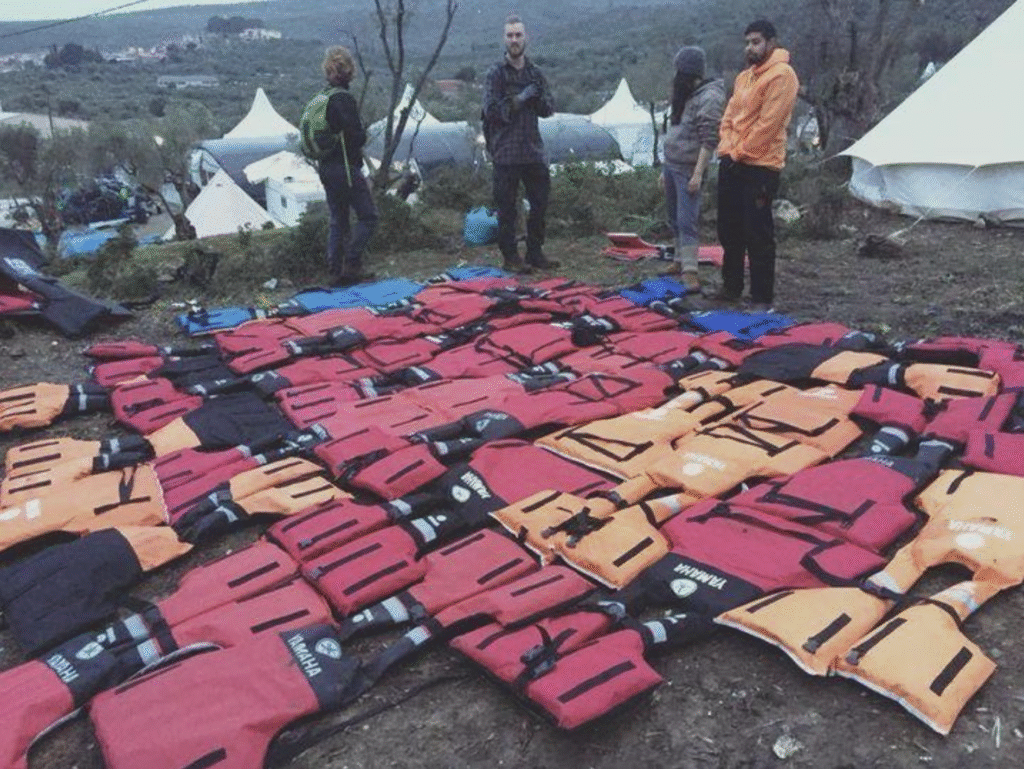
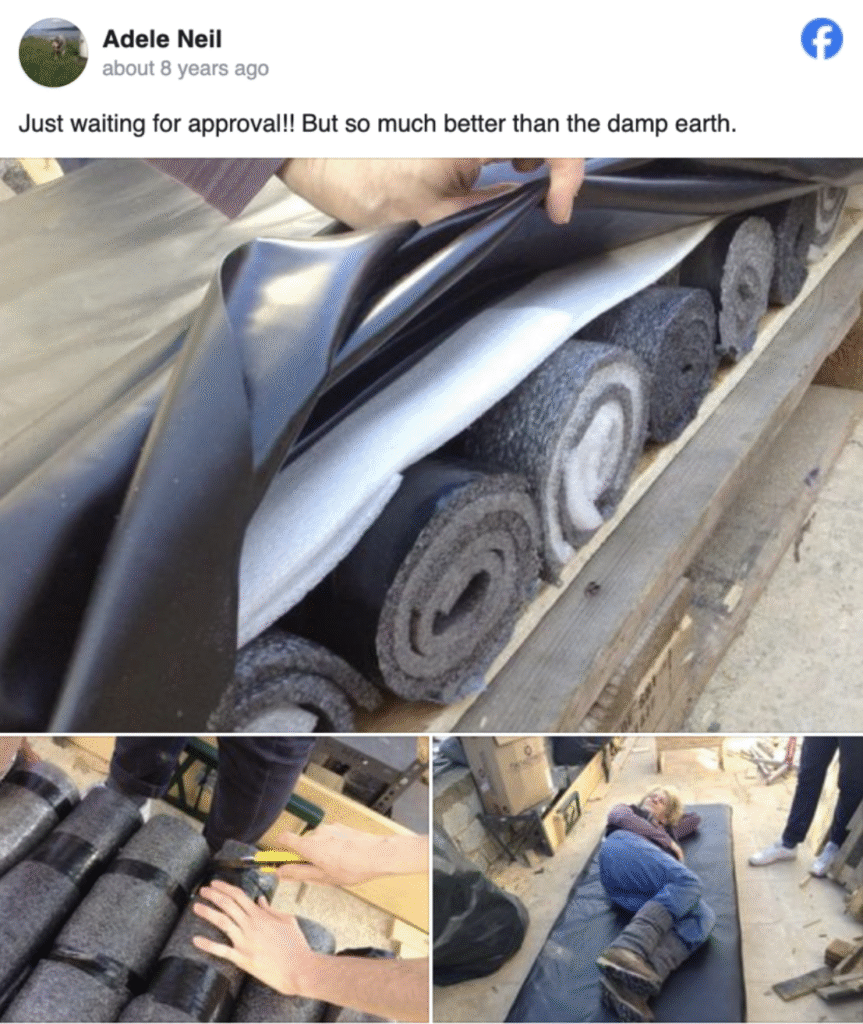
Connection to Mobile Networked Creativity
This appropriation is not exactly an example of Mobile Networked Creativity. It is not set against the backdrop of mobile technologies and networked communication. But, it is a creative process that emerged as a result of many people using already existing technologies, lifejackets, within their environments to survive. It is an example where collaboration enabled ideas to circulate and materials to be remixed. Most importantly, these “products” came into being as a result of the limited mobile agency of forced migrants. These are products of their forced mobility, and especially their immobility, as forced migrants are caught between displacement and emplacement.
Location
Lesvos Island, Greece
Date
2015
To Learn More
- Patrick Strickland, “Life-jacket mountain a metaphor for Greece’s refugees,” 2015.
